2018
FRM®
LEARNING OBJECTIVES
FINANCIAL RISK MANAGER
garp.org/frm
�
2018 Financial Risk Manager (FRM®) Learning Objectives
The Global Association of Risk Professionals (GARP®) created the
Financial Risk Manager (FRM®) Learning Objectives document to provide a
comprehensive resource for those interested in becoming Certified FRMs.
The FRM Learning Objectives
The FRM is a comprehensive exam and you are expected to be familiar with a broad range of risk management
concepts and techniques. Key concepts appear in the Study Guide as bullet points at the beginning of each section to
help you identify the major themes and knowledge domains associated with the readings listed under each section.
The Learning Objectives document builds upon the Study Guide and highlights more details around the recommended
readings as well as specific learning objectives associated with each section of the knowledge domains covered by the
Exam. Approximate weightings for each knowledge domain are assigned to help you navigate through the self-study
process as these learning objectives form the backbone of the Exam itself; therefore, it is strongly suggested that you
become familiar with these learning objectives as you review the readings.
www.garp.org/frm
1
© 2018 Global Association of Risk Professionals. �
FRM®
LEARNING OBJECTIVES
Part I
�
Foundations of Risk Management – Part I Exam Weight 20% (FRM)
The broad areas of knowledge covered in readings related to Foundations of Risk Management include the following:
2018 Financial Risk Manager (FRM®) Learning Objectives Part I
} Basic risk types, measurement and management tools
} Creating value with risk management
} The role of risk management in corporate governance
} Enterprise Risk Management (ERM)
} Financial disasters and risk management failures
} The Capital Asset Pricing Model (CAPM)
} Risk-adjusted performance measurement
} Multifactor models
} Data aggregation and risk reporting
} Ethics and the GARP Code of Conduct
The readings that you should focus on for this section and the specific learning objectives that should be achieved with
each reading are:
Michel Crouhy, Dan Galai, and Robert Mark, The Essentials of Risk Management, 2nd Edition (New York, NY:
McGraw-Hill, 2014).
Chapter 1. Risk Management: A Helicopter View (Including Appendix 1.1) [FRM–1]
After completing this reading you should be able to:
• Explain the concept of risk and compare risk management with risk taking.
• Describe the risk management process and identify problems and challenges that can arise in the risk
management process.
• Evaluate and apply tools and procedures used to measure and manage risk, including quantitative measures,
qualitative assessment, and enterprise risk management.
• Distinguish between expected loss and unexpected loss, and provide examples of each.
•
Interpret the relationship between risk and reward and explain how conflicts of interest can impact
risk management.
• Describe and differentiate between the key classes of risks, explain how each type of risk can arise, and assess the
potential impact of each type of risk on an organization.
Chapter 2. Corporate Risk Management: A Primer [FRM–2]
After completing this reading you should be able to:
• Evaluate some advantages and disadvantages of hedging risk exposures.
• Explain considerations and procedures in determining a firm’s risk appetite and its business objectives.
• Explain how a company can determine whether to hedge specific risk factors, including the role of the board of
directors and the process of mapping risks.
• Apply appropriate methods to hedge operational and financial risks, including pricing, foreign currency, and interest
rate risk.
• Assess the impact of risk management instruments.
www.garp.org/frm
3
© 2018 Global Association of Risk Professionals. �
2018 Financial Risk Manager (FRM®) Learning Objectives Part I
Chapter 4. Corporate Governance and Risk Management [FRM–3]
After completing this reading you should be able to:
• Compare and contrast best practices in corporate governance with those of risk management.
• Assess the role and responsibilities of the board of directors in risk governance.
• Evaluate the relationship between a firm’s risk appetite and its business strategy, including the role of incentives.
• Distinguish the different mechanisms for transmitting risk governance throughout an organization.
•
• Assess the role and responsibilities of a firm’s audit committee.
Illustrate the interdependence of functional units within a firm as it relates to risk management.
James Lam, Enterprise Risk Management: From Incentives to Controls, 2nd Edition (Hoboken, NJ: John Wiley &
Sons, 2014).
Chapter 4. What is ERM? [FRM–4]
After completing this reading you should be able to:
• Describe Enterprise Risk Management (ERM) and compare and contrast differing definitions of ERM.
• Compare the benefits and costs of ERM and describe the motivations for a firm to adopt an ERM initiative.
• Describe the role and responsibilities of a Chief Risk Officer (CRO) and assess how the CRO should interact with
other senior management.
• Distinguish between components of an ERM program.
René Stulz, “Risk Management, Governance, Culture and Risk Taking in Banks,” FRBNY Economic Policy Review,
(August 2016): 43-59. [FRM–5]
After completing this reading you should be able to:
• Assess methods that banks can use to determine their optimal level of risk exposure, and explain how the optimal
level of risk can differ across banks.
• Describe implications for a bank if it takes too little or too much risk compared to its optimal level.
• Explain ways in which risk management can add or destroy value for a bank.
• Describe structural challenges and limitations to effective risk management, including the use of VaR in
setting limits.
• Assess the potential impact of a bank’s governance, incentive structure, and risk culture on its risk profile and
its performance.
Steve Allen, Financial Risk Management: A Practitioner’s Guide to Managing Market and Credit Risk, 2nd Edition
(New York, NY: John Wiley & Sons, 2013).
Chapter 4. Financial Disasters [FRM–6]
After completing this reading you should be able to:
• Analyze the key factors that led to and derive the lessons learned from the following risk management case studies:
- Chase Manhattan and their involvement with Drysdale Securities
- Kidder Peabody
- Barings
- Allied Irish Bank
- Union Bank of Switzerland (UBS)
- Société Générale
- Long Term Capital Management (LTCM)
- Metallgesellschaft
- Bankers Trust
- JPMorgan, Citigroup, and Enron
www.garp.org/frm
4
© 2018 Global Association of Risk Professionals. �
2018 Financial Risk Manager (FRM®) Learning Objectives Part I
Markus K. Brunnermeier, 2009. “Deciphering the Liquidity and Credit Crunch 2007—2008,” Journal of Economic
Perspectives 23:1, 77—100. [FRM–7]
After completing this reading you should be able to:
• Describe the key factors that led to the housing bubble.
• Explain the banking industry trends leading up to the liquidity squeeze and assess the triggers for the
liquidity crisis.
• Explain the purposes and uses of credit default swaps.
• Describe how securitized and structured products were used by investor groups and describe the consequences of
their increased use.
• Describe how the financial crisis triggered a series of worldwide financial and economic consequences.
• Distinguish between funding liquidity and market liquidity and explain how the evaporation of liquidity can lead to a
financial crisis.
• Analyze how an increase in counterparty credit risk can generate additional funding needs and possible
systemic risk.
Gary Gorton and Andrew Metrick, 2012. “Getting Up to Speed on the Financial Crisis: A One-Weekend-Reader’s
Guide,” Journal of Economic Literature 50:1, 128—150. [FRM–8]
After completing this reading you should be able to:
• Distinguish between triggers and vulnerabilities that led to the financial crisis and their contributions to the crisis.
• Describe the main vulnerabilities of short-term debt especially repo agreements and commercial paper.
• Assess the consequences of the Lehman failure on the global financial markets.
• Describe the historical background leading to the recent financial crisis.
• Distinguish between the two main panic periods of the financial crisis and describe the state of the
markets during each.
• Assess the governmental policy responses to the financial crisis and review their short-term impact.
• Describe the global effects of the financial crisis on firms and the real economy.
René Stulz, “Risk Management Failures: What Are They and When Do They Happen?” Fisher College of Business
Working Paper Series, October 2008. [FRM–9]
After completing this reading you should be able to:
• Explain how a large financial loss may not necessarily be evidence of a risk management failure.
• Analyze and identify instances of risk management failure.
• Explain how risk management failures can arise in the following areas: measurement of known risk exposures,
identification of risk exposures, communication of risks, and monitoring of risks.
• Evaluate the role of risk metrics and analyze the shortcomings of existing risk metrics.
Edwin J. Elton, Martin J. Gruber, Stephen J. Brown and William N. Goetzmann, Modern Portfolio Theory and
Investment Analysis, 9th Edition (Hoboken, NJ: John Wiley & Sons, 2014).
Chapter 13. The Standard Capital Asset Pricing Model [FRM–10]
After completing this reading you should be able to:
• Understand the derivation and components of the CAPM.
• Describe the assumptions underlying the CAPM.
•
• Apply the CAPM in calculating the expected return on an asset.
•
Interpret beta and calculate the beta of a single asset or portfolio.
Interpret the capital market line.
www.garp.org/frm
5
© 2018 Global Association of Risk Professionals. �
2018 Financial Risk Manager (FRM®) Learning Objectives Part I
Noel Amenc and Veronique Le Sourd, Portfolio Theory and Performance Analysis (West Sussex, UK: John Wiley &
Sons, 2003).
Chapter 4. Applying the CAPM to Performance Measurement: Single-Index Performance Measurement Indicators
(Section 4.2 only) [FRM–11]
After completing this reading you should be able to:
• Calculate, compare, and evaluate the Treynor measure, the Sharpe measure, and Jensen’s alpha.
• Compute and interpret tracking error, the information ratio, and the Sortino ratio.
Zvi Bodie, Alex Kane, and Alan J. Marcus, Investments, 10th Edition (New York, NY: McGraw-Hill, 2013).
Chapter 10. Arbitrage Pricing Theory and Multifactor Models of Risk and Return [FRM–12]
After completing this reading you should be able to:
• Describe the inputs, including factor betas, to a multifactor model.
• Calculate the expected return of an asset using a single-factor and a multifactor model.
• Describe properties of well-diversified portfolios and explain the impact of diversification on the residual risk of
a portfolio.
• Explain how to construct a portfolio to hedge exposure to multiple factors.
• Describe and apply the Fama-French three factor model in estimating asset returns.
“Principles for Effective Data Aggregation and Risk Reporting,” (Basel Committee on Banking Supervision
Publication, January 2013). [FRM–13]
After completing this reading you should be able to:
• Explain the potential benefits of having effective risk data aggregation and reporting.
• Describe key governance principles related to risk data aggregation and risk reporting practices.
•
Identify the data architecture and IT infrastructure features that can contribute to effective risk data aggregation
and risk reporting practices.
• Describe characteristics of a strong risk data aggregation capability and demonstrate how these characteristics
interact with one another.
• Describe characteristics of effective risk reporting practices.
GARP Code of Conduct.* [FRM–14]
After completing this reading you should be able to:
• Describe the responsibility of each GARP Member with respect to professional integrity, ethical conduct, conflicts of
interest, confidentiality of information, and adherence to generally accepted practices in risk management.
• Describe the potential consequences of violating the GARP Code of Conduct.
*This reading is freely available on the GARP website.
www.garp.org/frm
6
© 2018 Global Association of Risk Professionals. �
Quantitative Analysis – Part I Exam Weight 20% (QA)
The broad areas of knowledge covered in readings related to Quantitative Analysis include the following:
2018 Financial Risk Manager (FRM®) Learning Objectives Part I
} Discrete and continuous probability distributions
} Estimating the parameters of distributions
} Population and sample statistics
} Bayesian analysis
} Statistical inference and hypothesis testing
} Estimating correlation and volatility using EWMA and GARCH models
} Volatility term structures
} Correlations and copulas
} Linear regression with single and multiple regressors
} Time series analysis and forecasting
} Simulation methods
The readings that you should focus on for this section and the specific learning objectives that should be achieved with
each reading are:
Michael Miller, Mathematics and Statistics for Financial Risk Management, 2nd Edition (Hoboken, NJ: John Wiley &
Sons, 2013).
Chapter 2. Probabilities [QA–1]
After completing this reading you should be able to:
• Describe and distinguish between continuous and discrete random variables.
• Define and distinguish between the probability density function, the cumulative distribution function, and the
inverse cumulative distribution function.
• Calculate the probability of an event given a discrete probability function.
• Distinguish between independent and mutually exclusive events.
• Define joint probability, describe a probability matrix, and calculate joint probabilities using probability matrices.
• Define and calculate a conditional probability, and distinguish between conditional and unconditional probabilities.
Interpret and apply the mean, standard deviation, and variance of a random variable.
Interpret and calculate the expected value of a discrete random variable.
Chapter 3. Basic Statistics [QA–2]
After completing this reading you should be able to:
•
• Calculate the mean, standard deviation, and variance of a discrete random variable.
•
• Calculate and interpret the covariance and correlation between two random variables.
• Calculate the mean and variance of sums of variables.
• Describe the four central moments of a statistical variable or distribution: mean, variance, skewness, and kurtosis.
•
Interpret the skewness and kurtosis of a statistical distribution, and interpret the concepts of coskewness
and cokurtosis.
• Describe and interpret the best linear unbiased estimator.
www.garp.org/frm
7
© 2018 Global Association of Risk Professionals. �
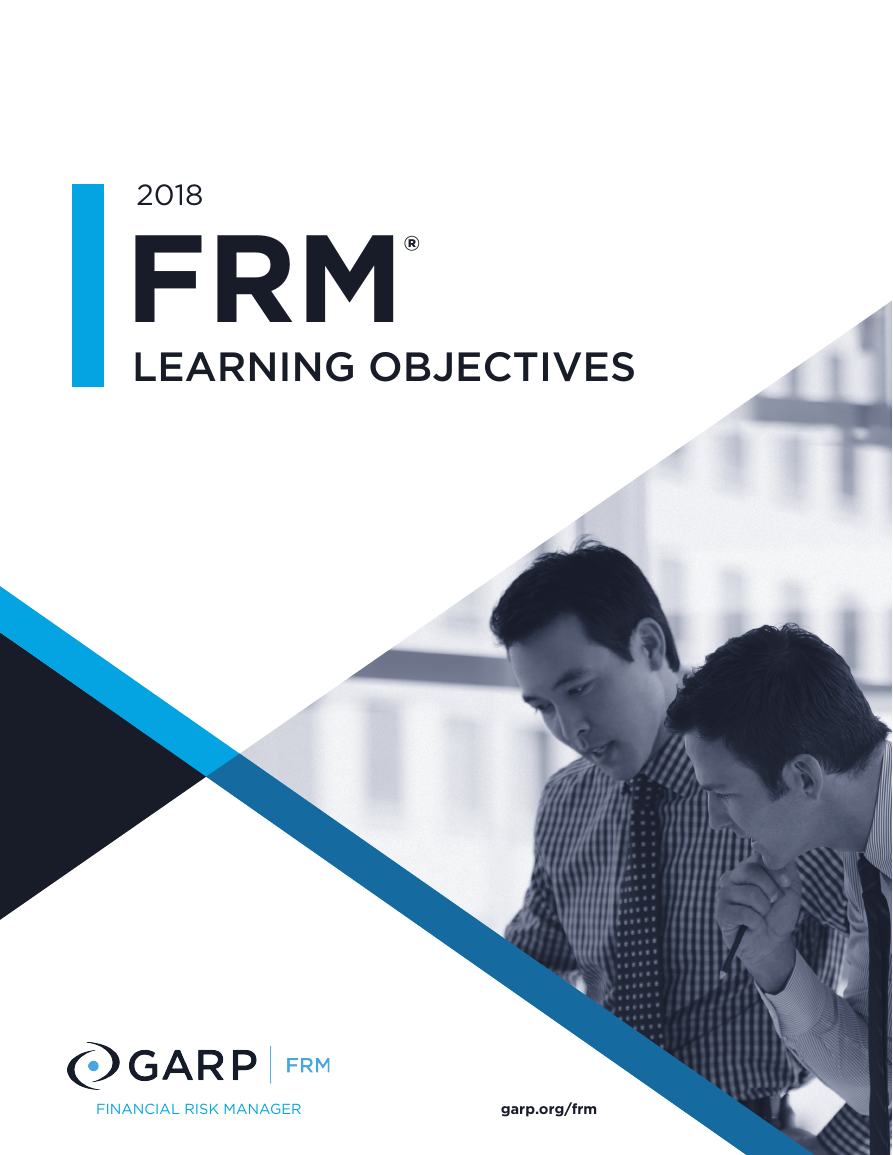
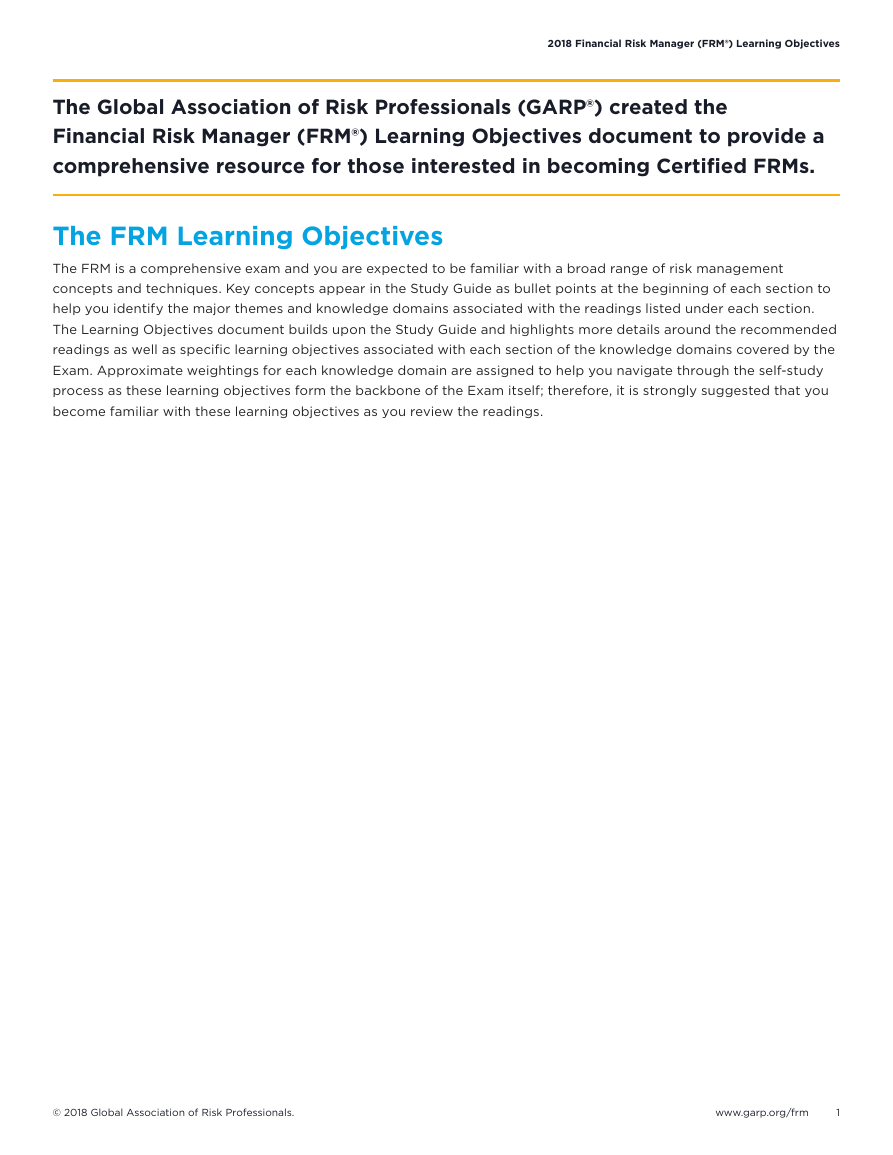
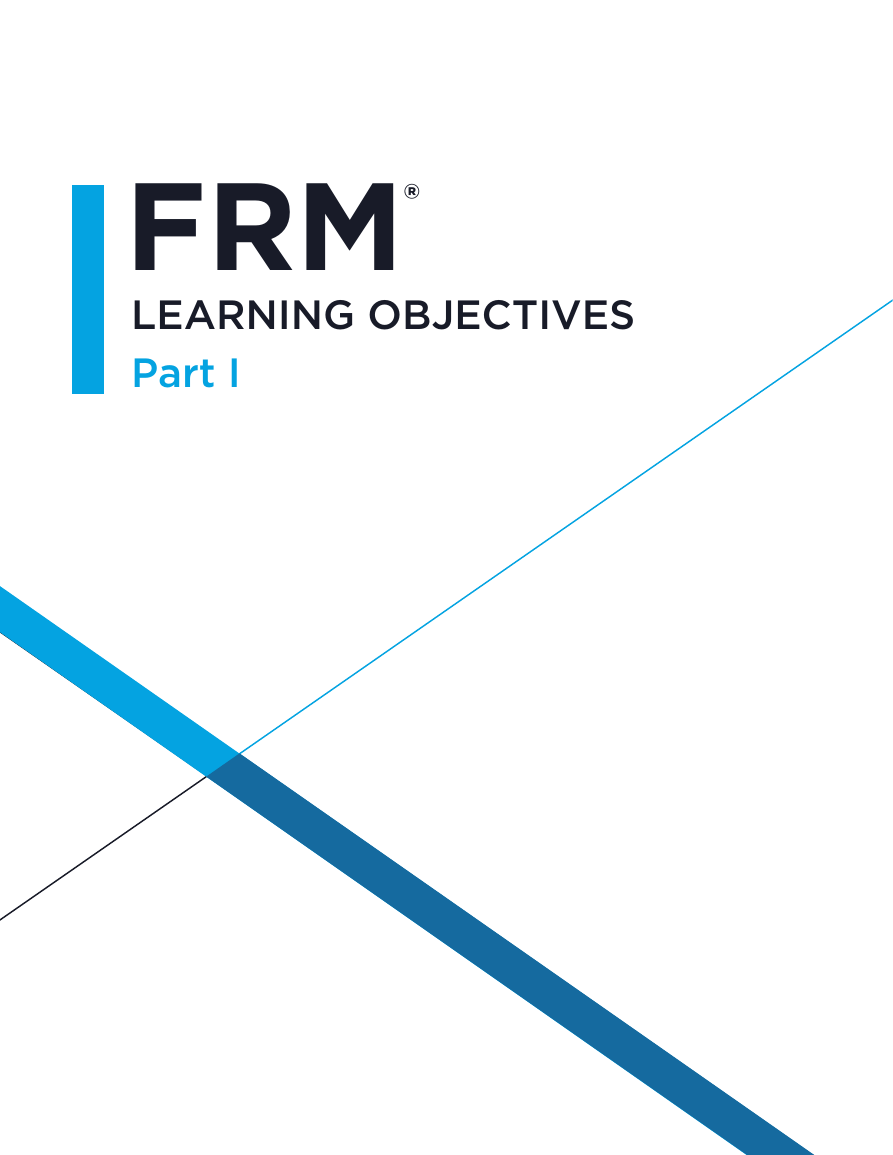
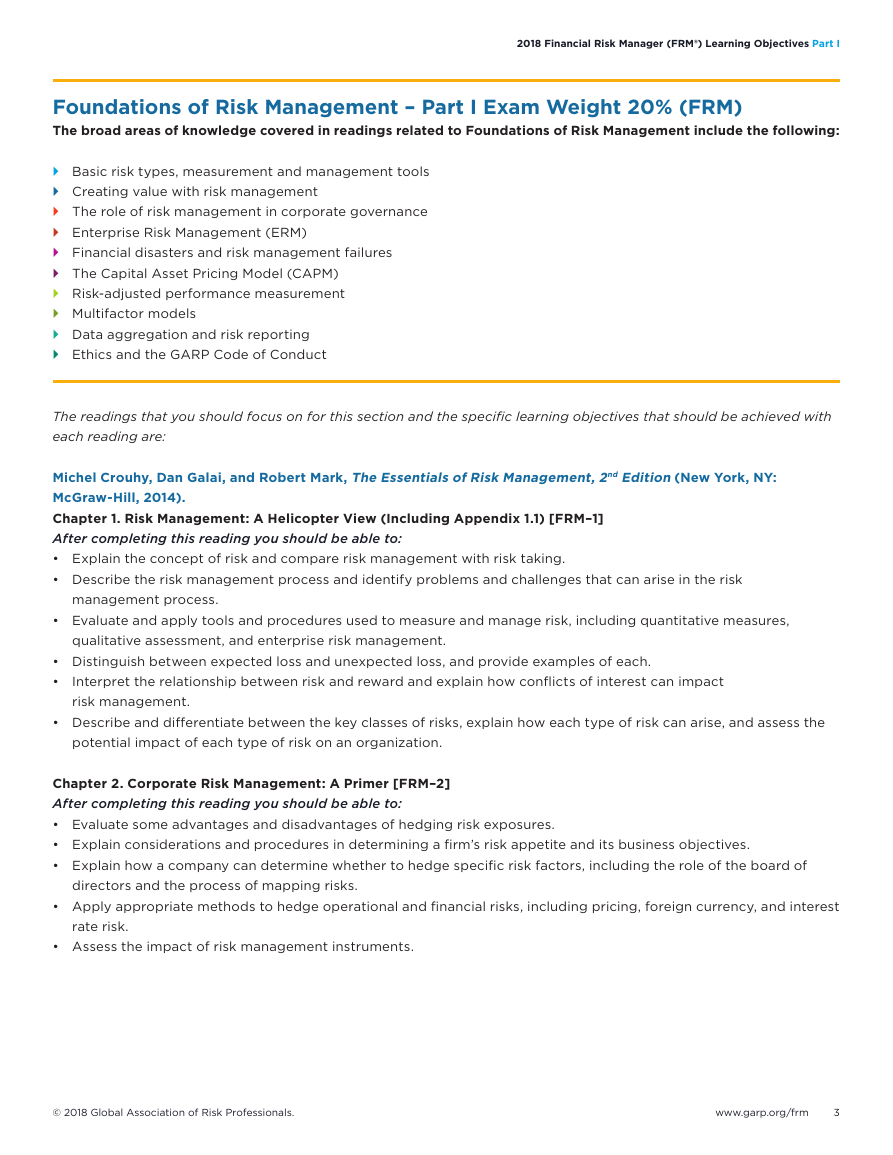
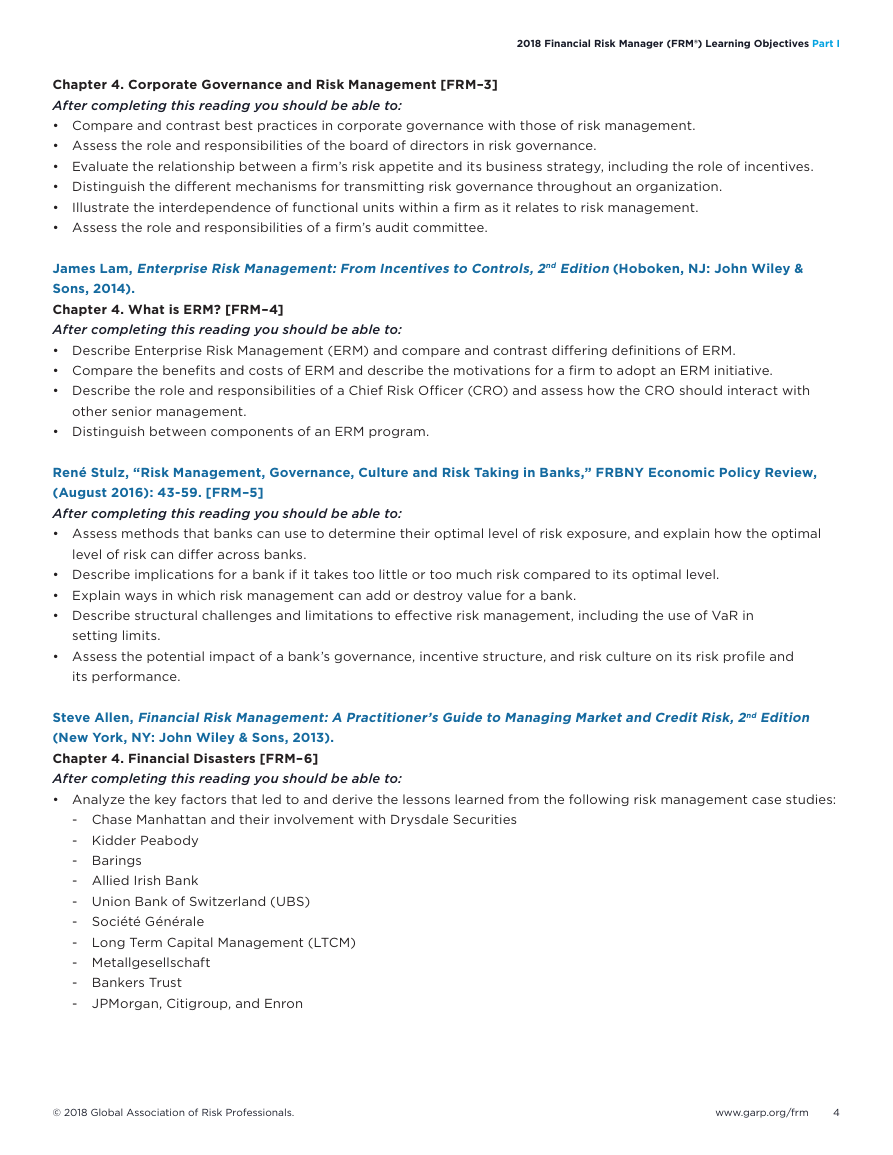
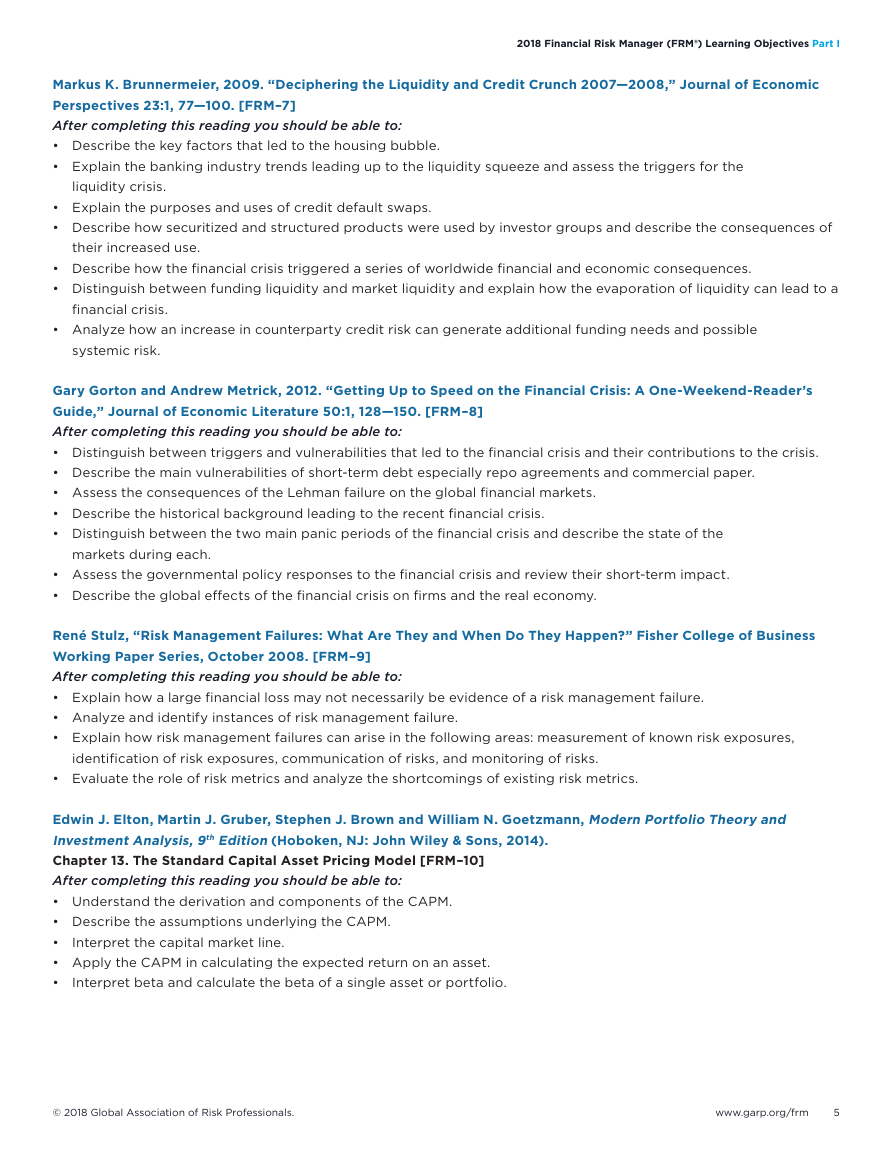

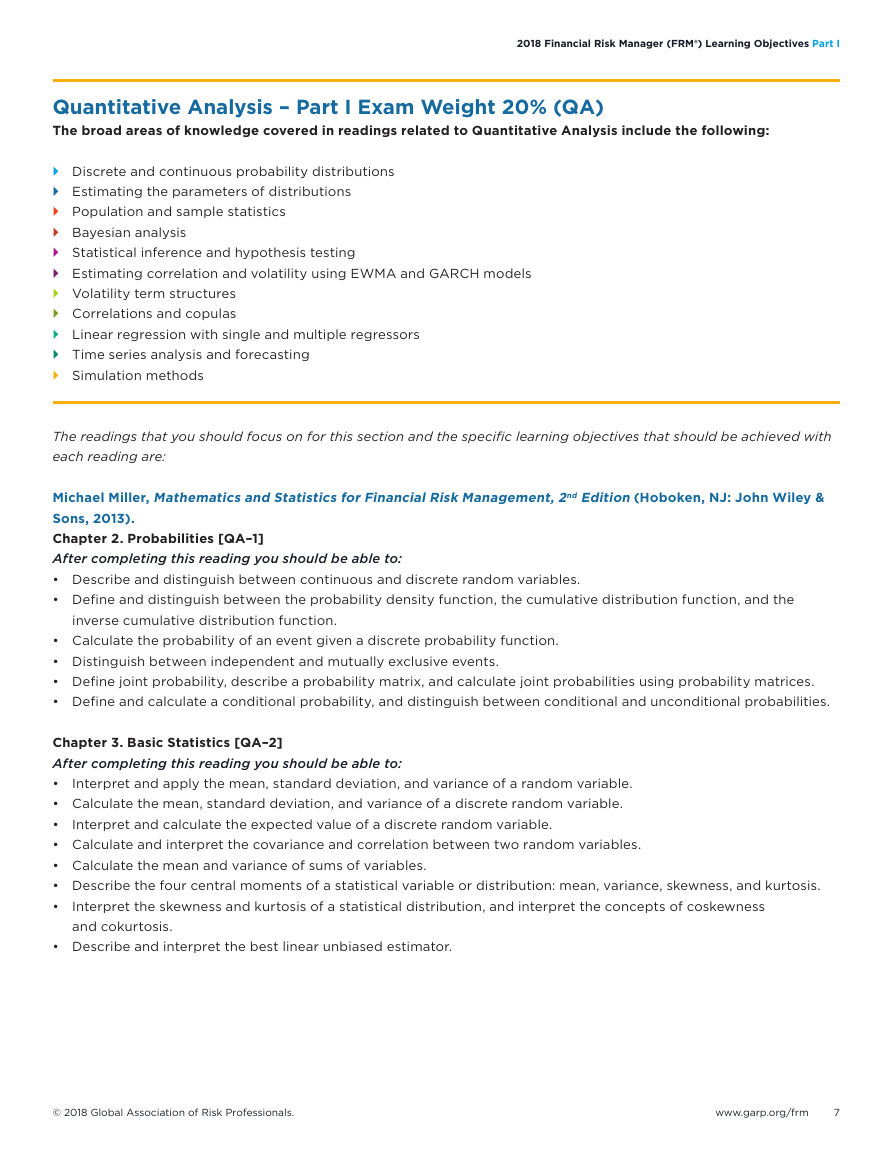








 2023年江西萍乡中考道德与法治真题及答案.doc
2023年江西萍乡中考道德与法治真题及答案.doc 2012年重庆南川中考生物真题及答案.doc
2012年重庆南川中考生物真题及答案.doc 2013年江西师范大学地理学综合及文艺理论基础考研真题.doc
2013年江西师范大学地理学综合及文艺理论基础考研真题.doc 2020年四川甘孜小升初语文真题及答案I卷.doc
2020年四川甘孜小升初语文真题及答案I卷.doc 2020年注册岩土工程师专业基础考试真题及答案.doc
2020年注册岩土工程师专业基础考试真题及答案.doc 2023-2024学年福建省厦门市九年级上学期数学月考试题及答案.doc
2023-2024学年福建省厦门市九年级上学期数学月考试题及答案.doc 2021-2022学年辽宁省沈阳市大东区九年级上学期语文期末试题及答案.doc
2021-2022学年辽宁省沈阳市大东区九年级上学期语文期末试题及答案.doc 2022-2023学年北京东城区初三第一学期物理期末试卷及答案.doc
2022-2023学年北京东城区初三第一学期物理期末试卷及答案.doc 2018上半年江西教师资格初中地理学科知识与教学能力真题及答案.doc
2018上半年江西教师资格初中地理学科知识与教学能力真题及答案.doc 2012年河北国家公务员申论考试真题及答案-省级.doc
2012年河北国家公务员申论考试真题及答案-省级.doc 2020-2021学年江苏省扬州市江都区邵樊片九年级上学期数学第一次质量检测试题及答案.doc
2020-2021学年江苏省扬州市江都区邵樊片九年级上学期数学第一次质量检测试题及答案.doc 2022下半年黑龙江教师资格证中学综合素质真题及答案.doc
2022下半年黑龙江教师资格证中学综合素质真题及答案.doc